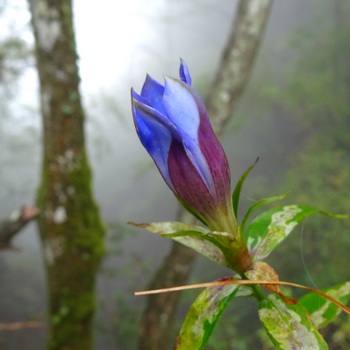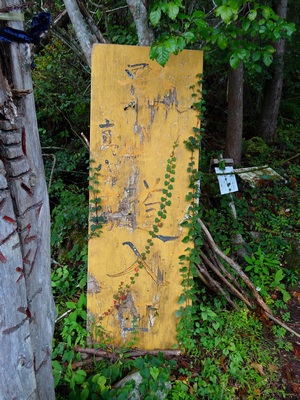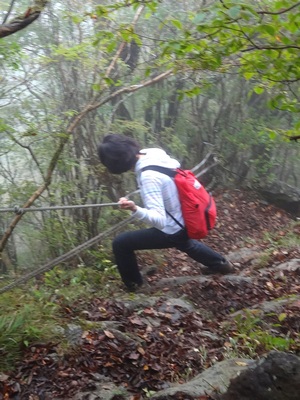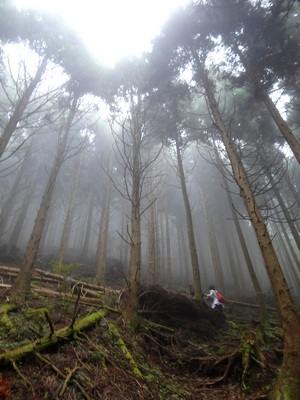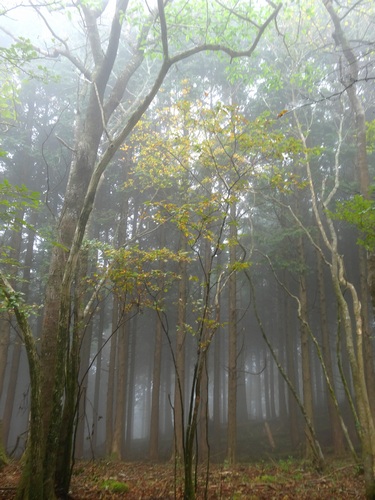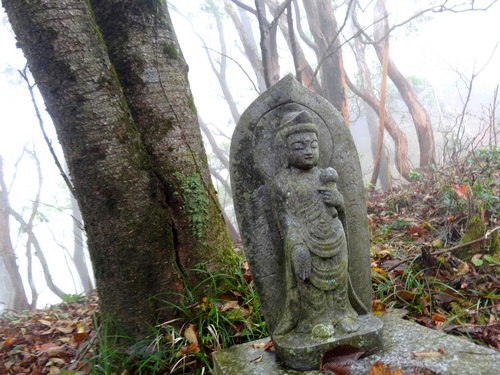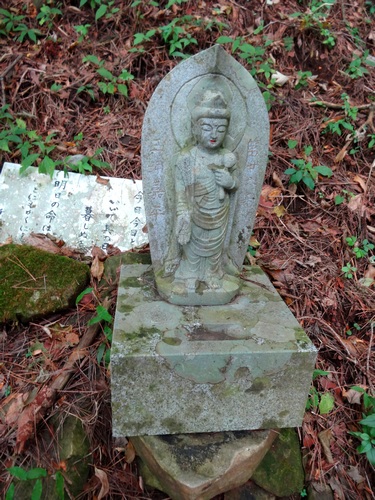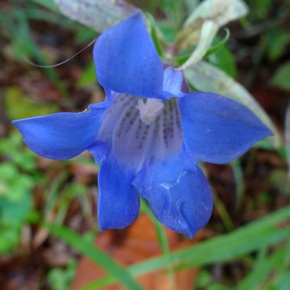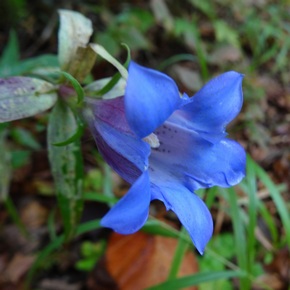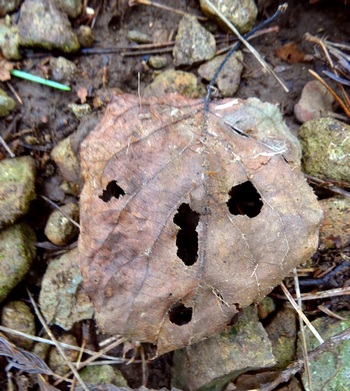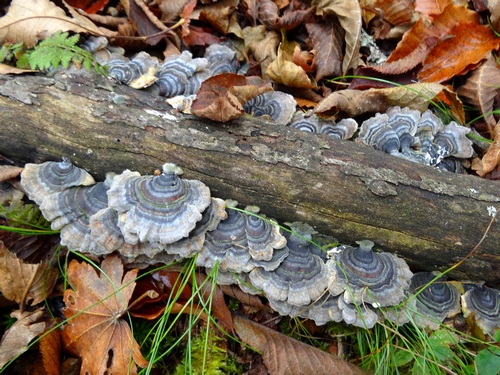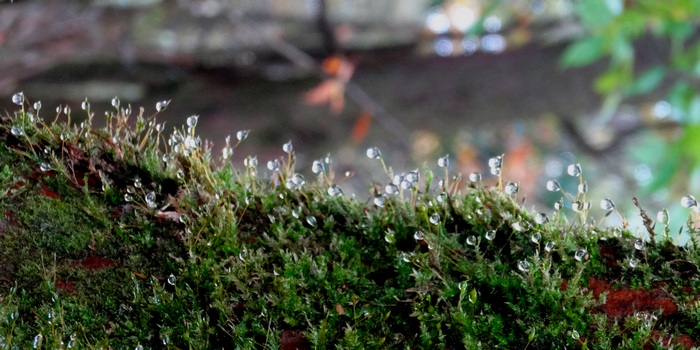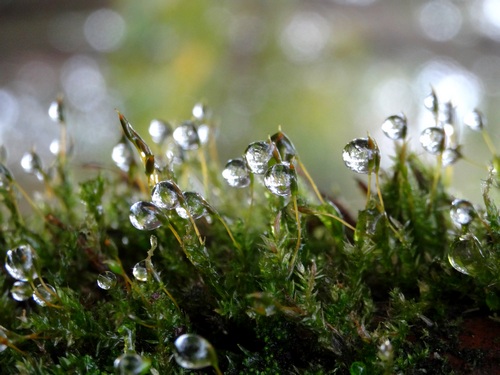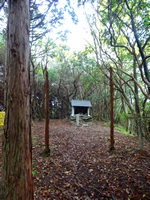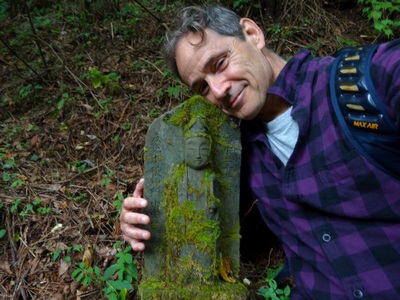Some days you don’t get blue skies.
And sometimes the trail markers are not very clear.
And sometimes things get a little steep.
And sometimes, when you’re chug-chug-chugging up through a long and neverending stretch of cedars, you get a feeling that you’re getting nowhere, that you’re looking up into the same trees you thought you had just passed, that your time to the top hasn’t diminished by a second.
But, usually, just then, that’s when the mist rolls in.
I like the mist.
The mist . . . in the forest . . . on the mountain.
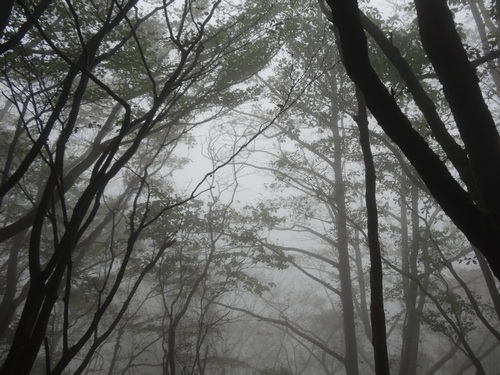 Kind of makes me feel like I’m closed inside a secret chamber, just the mountain and me and my hiking buddies inside.
Kind of makes me feel like I’m closed inside a secret chamber, just the mountain and me and my hiking buddies inside.
It’s peaceful.
When you’re on Mafuji Mountain, it’s a special sort of secret chamber, though, because all over the mountain you come across the Dieties of Mercy. The Goddesses of Kannon. If you’re in China, those may be the Goddesses of Kuan Yin.
These gals are great. They have heard all the sounds that the world has ever produced, and—I’m guessing—are aware of all the world has ever experienced. Just as you’d imagine, all that has turned them into exemplars of compassion. Their hearts are open to everyone. They turn no one away. They accept everyone. And they are all over Mafuji Mountain.
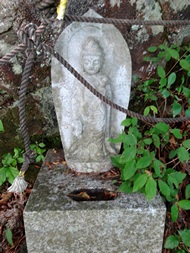
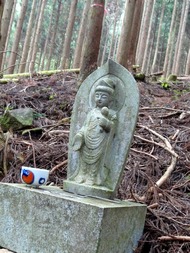
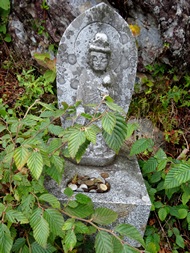 Some of these Kannon gals seemed pretty proud of their poetry. They had their poems displayed on big white boards as big as themselves.
Some of these Kannon gals seemed pretty proud of their poetry. They had their poems displayed on big white boards as big as themselves.
This poem roughly translates as . . .
Today, today.
Live for today.
Who knows what tomorrow will bring?
Some folks may say that the Kannon gals are especially eager to protect women and children, and you may be tempted to think that, too, when you see the way they’re always cuddling a baby to their breasts. But as I walked by each, I felt they were just as ready to be compassionate with me as with my two female companions. I asked one of my female companions what she thought. She said my vibe was right. So that’s what at least two people in this world think.
But don’t expect these Kannon gals to fill you in on all they’ve learned, or all they know, or all they are aware of. As enlightened as they are, they could not possibly do that. All they can tell you is to do what they have done.
“Look. Listen. Experience,” one said, as I walked by.
Well, in the mist, you do listen. There is the chirping of scattered birds—and there is the silence. You can hear the silence best when you don’t move.
And you look. The sun and blue sky are way off somewhere, but moisture abounds, and it can brighten colors, too. Dusty greens and reds, all wet, glisten.
Against glistening backgrounds, blues and purples intensify.
And then you realize you are looking. Looking at everything. You can’t stop looking. And you see things that, maybe, in a way, aren’t really there.
Like a jack-o-lantern inside a battered leaf.
Or clams and driftwood washed up on a leafy shore.
Or a slivering flower bud poised to strike.
Or diamonds.
Really, diamonds in the moss.
Just look.
Diamonds glistening in the misty light. Down on the ground. Inside the secret chamber. With you.
“I think I’m doing a lot more looking than listening,” I say.
“Whatever!” the Konnan gals reply, in chorus, giggling.
So what about the hike? you ask. How is all this going to help us plan our ascent? What kind of guide are you?
Okay, okay. Here are the details. We started. We took a wrong turn and had to turn back and find the right trail. (Imagine that! It was the trail that went up!)
A couple of hours later we were at the top. The ridge was about 10 degrees centigrade (maybe 22 degrees in Shizuoka City), but when we got to the peak (1403 meters) for lunch, it had turned oddly warm. Maybe that was because we offered up a total of 12 yen to the little god there (12 yen = 12 U.S. cents)—and the sun suddenly found a thin patch of cloud and mist to shine faintly through.
Actually, there are two peaks. They are named, as if for characters in a Dr. Seuss book, Peak One and Peak Two.
Somewhere near the lower peak (Peak One), there was a shrine, and we took several wrong turns looking for it, but finally we did find it. Its torii gate was broken—and it was not very big.
See, not very big at all. But it was very cute—I especially liked the gate—and there’s a nice view from there, too. So be sure to stop by.
From Shizuoka City, take route 29 to Hirano. At Hirano, turn right onto the rindoh (“the forest road”), just past the post office. Wind around for twenty minutes or so, across three bridges (I think it was three), past the “first” trailhead and the “second” trailhead. Park when you come to the “third” trailhead. That will be where you see the yellowish-orange sign that you can no longer read . A few years ago you could have read it just fine, and you would have been sure you’d indeed arrived at the “third” beginning point.
The sign that says there are bears in the vicinity is very legible. There are wild boars, too. Plenty of parking, at least for 9 or 10 cars, I’d guess.
Sometimes my right knee hurts coming down a mountain. It’s an old football injury. This time, though, it hurt only a wee bit—not nearly near enough to keep me from feeling immensely satisfied with the day.
Really, I did feel immensely satisfied. So immensely satisfied, in fact, that I had to give this guy a hug.
He’d been living on the mountain a long time, he said. He liked it there with all the Kannon gals.
